Importing changes from database
When your database schema changes, you can import those changes and update your Dataedo documentation schema in a similar way you imported it.
Import changes
To update documentation, click the Import changes button in the ribbon.

This will open the update wizard. The first screen is a connection form. Connection details are populated from the last connection - at import or last update. If you didn't use the 'Save password' option at the last connection, then you need to enter the password.
You can change connection details to point to a different database (even on a different server). In this case, use the 'Reimport all objects' option that is available in the next step. This may cover scenarios where you migrated databases to a new location or you want to switch between Dev, Test, and Live environments.
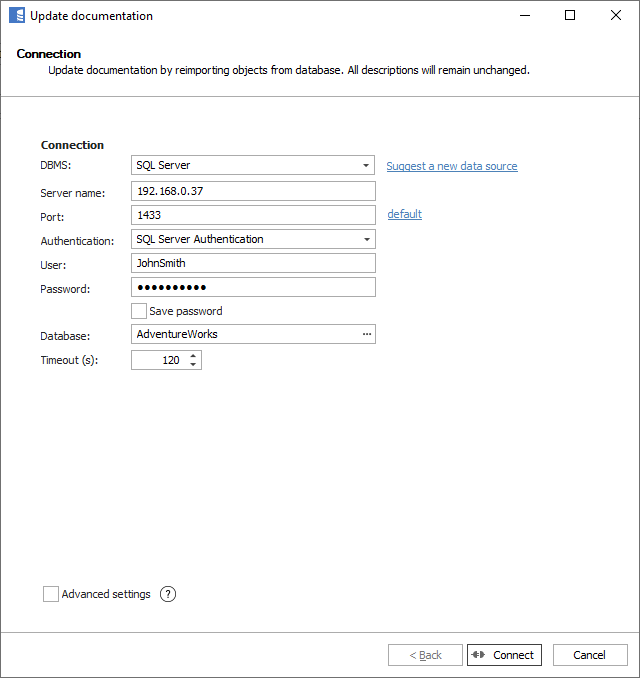
By default, the import will use the same filter you used last time. To change the filter, check the Advanced options box.
The next form will present changes in the database schema since the last import. You may choose to exclude some of the new objects from importing by unchecking them. You may also choose to include previously ignored objects by checking them.
The list shows:
- New - objects that were added to the schema since the last import
- Deleted - objects that were deleted from the schema since the last import
- Updated - objects that were updated since the last import (e.g., a column was added)
- Ignored - objects previously ignored from import
To import changes, click the Import button.

After the update, all new, updated, and deleted objects in the navigation tree will be marked with icons.
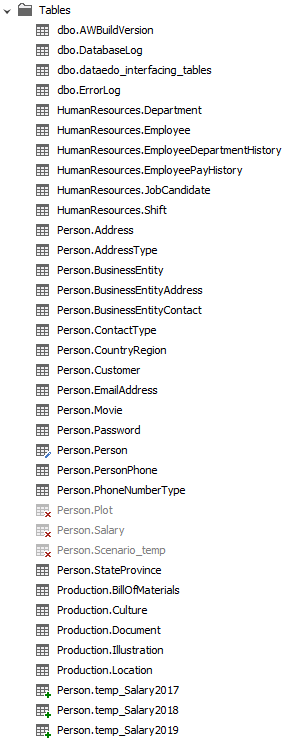
How it works
Dataedo gets (filtered) a list of objects (tables, views, stored procedures, and functions) from the server with the last modification date (this does not include MySQL - see details in the chapter below). Then it compares the list by names with the list from the repository. Objects that do not exist in the repository are considered new, objects that do not exist in the database are considered deleted. Objects whose names match but the server modification date is newer than the one in the repository (dbms_last_modification_date column) are considered updated.
New objects
New objects are simply added to the repository.
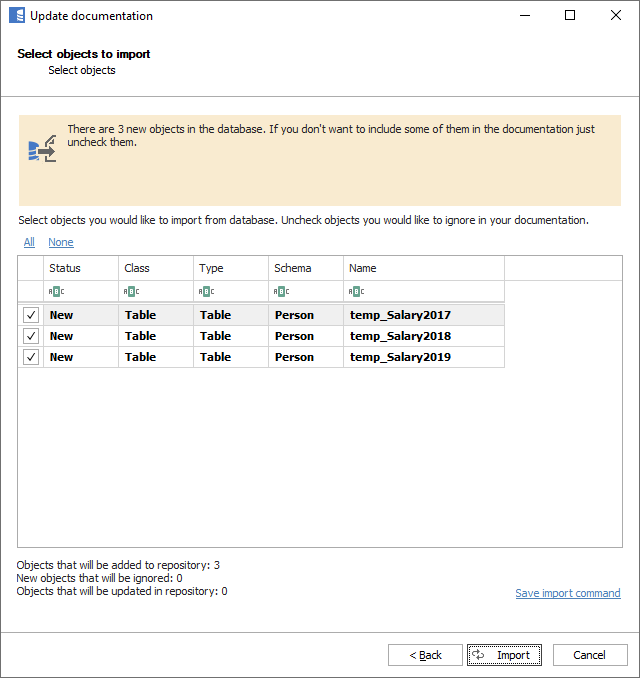
New objects are marked with star icons in the navigation tree. The icon disappears after the view gets refreshed.

Deleted objects

Deleted objects are marked as deleted but are still visible in the editor. All content is preserved. You may preview such objects and decide to delete them permanently from the repository - all content will be lost.
Deleted objects are marked with red cross icons in the navigation tree.

Deleted objects and their elements are ignored from all exports.
Note: Once you delete the object from the repository, its name gets added to the list of ignored objects. If an object with that name is created again, it will be ignored in future imports. Read more about ignoring and removing objects from documentation.
Updated objects
If an object is detected as updated, its definition is read again and compared to the one in the repository. Each element (column, key, relation, trigger, parameter) is looked up by name - if found, then attributes (data type, nullable, relations' and keys' columns, etc.) are updated in the repository. New elements are added to the documentation. Missing elements are marked as deleted just as it happens with objects (for more details go to the Deleted columns, keys, etc. section).
Existing descriptions are never overwritten. Descriptions are imported from the database only when empty in the repository.
Updated objects are marked with green tick icons in the navigation tree. The icon disappears after the view gets refreshed.

Renamed objects
If the object gets renamed, it behaves just as if it was deleted and created with a new name. This works for objects (tables, views, stored procedures, and functions) and their elements (columns, unique keys, relations, triggers...).
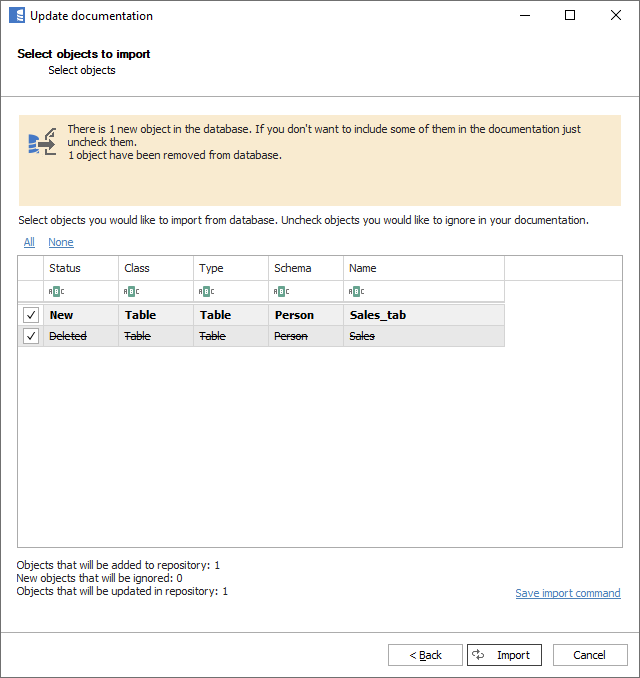

If the object was marked as deleted, you need to review its descriptions. If there were any entered in the Dataedo repository with the editor, you might want to copy them to the new object. This needs to be done manually for the main object description and all its elements (i.e., columns, keys, etc.).
Once you no longer need any descriptions of the deleted object, you may remove it permanently from the repository. You can do it with the Delete key or Remove from repository option in the ribbon or context menu (right-click).
Deleted columns, keys, etc.
Similarly to objects (tables, views, etc.), their elements (columns, keys, parameters, etc.) are marked as deleted when missing in import. The idea is the same - copy the description and delete with the Delete key or Remove from repository option in the context menu (right-click).
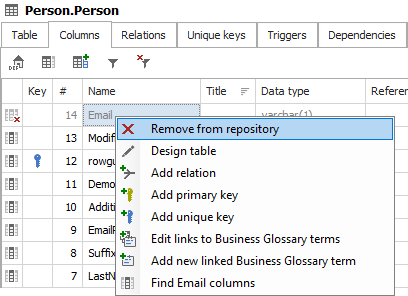
Renamed columns, keys, etc.
Renamed columns, keys, parameters, etc. work the same as objects - an element with an old name gets marked as deleted, and an element with a new name is created. And again, copy the description from the old to the new element if required and delete the old element.

